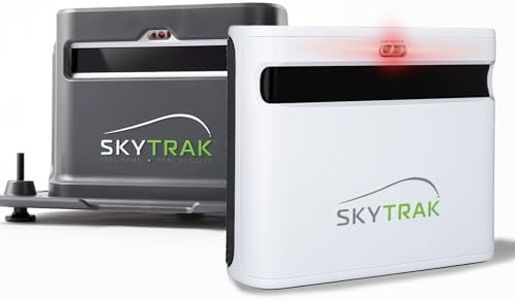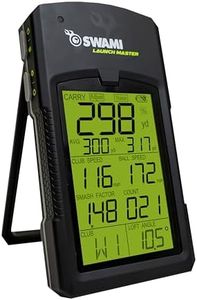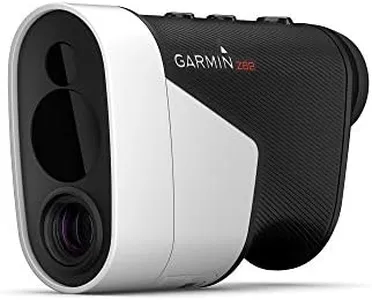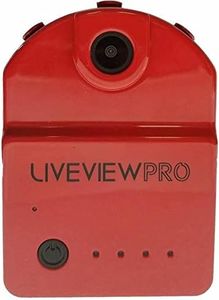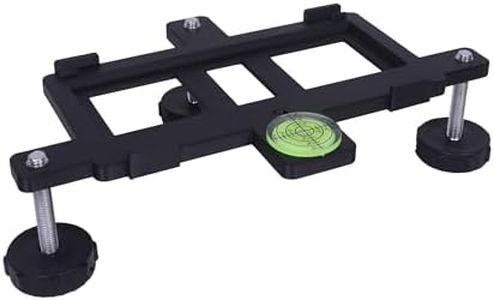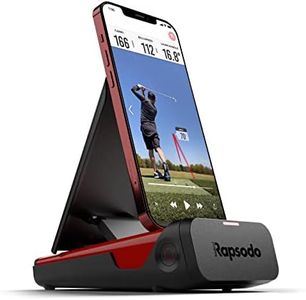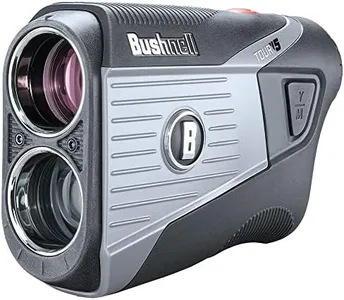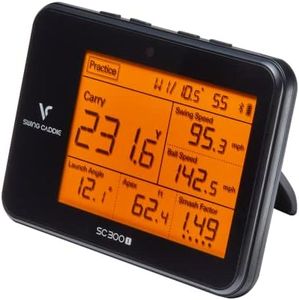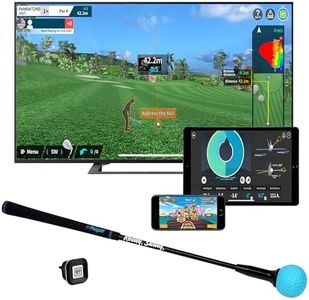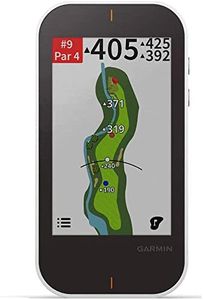We Use CookiesWe use cookies to enhance the security, performance,
functionality and for analytical and promotional activities. By continuing to browse this site you
are agreeing to our privacy policy
10 Best Golf Monitors
From leading brands and best sellers available on the web.By clicking on a link to a third party's website, log data is shared with that third party.
Buying Guide for the Best Golf Monitors
When choosing a golf monitor, it's important to think about how and where you'll use it, what features matter most to you, and what level of accuracy you need for your game improvement or enjoyment. Golf monitors come in a range of shapes and sizes, from portable devices you can use on the practice range to more permanent setups at home. Understanding what each specification means will help you make a confident and informed decision for your skill level and practice goals.AccuracyAccuracy refers to how well the golf monitor measures and represents data like ball speed, launch angle, spin rate, distance, and club path. This is important because accurate measurements help you identify what to improve in your swing. If a monitor is only somewhat accurate, you may not get reliable feedback. Accuracy is often best in higher-end models, but even basic monitors can be useful for general feedback. To choose the right level, consider how serious you are about your golf development: casual players can compromise a bit, but if you're working towards significant improvement or fitting clubs, higher accuracy is crucial.
PortabilityPortability tells you how easy it is to move the golf monitor from place to place. Some are compact enough to slip into your bag and use anywhere, while others are larger and intended for fixed installations. If you plan to practice in different locations, go for a lightweight, portable model. For a dedicated home or indoor setup, a heavier, stationary monitor may provide more features. Think about whether you practice more at home, the range, or while traveling to decide how portable your monitor should be.
Data MetricsData metrics are the types and amounts of data the monitor provides, such as swing path, ball speed, launch direction, spin rates, and more. Basic monitors report fewer and simpler stats, while advanced ones give detailed swing analysis. If you're a beginner, simple metrics like distance and swing speed may be enough. More advanced golfers looking to fine-tune their technique should choose a monitor that supplies deeper and more granular data.
Ease of UseEase of use describes how simple it is to set up, operate, and understand the golf monitor and its companion apps or interfaces. A monitor that's quick to set up and easy to read makes practicing less of a hassle and more enjoyable. Look for a model with clear instructions, an intuitive display, and possibly smartphone compatibility if you value simplicity. Beginners or tech-averse users should prioritize ease of use, while experienced users might accept a learning curve for more advanced features.
Indoor vs. Outdoor CapabilitySome golf monitors are designed mainly for outdoor use, while others work well inside or are even optimized for both. Outdoor monitors rely on ball flight tracking in open space, while indoor monitors often use sensors or radar to track over shorter distances. If you’ll practice primarily outside, most monitors will work well; if you need to train indoors—as in a garage, basement, or simulator room—make sure your monitor is suitable for this setting. Think about your main practice environment and ensure compatibility.
Connectivity and App IntegrationConnectivity refers to how the monitor sends data to other devices—like smartphones, tablets, or computers—and what kind of analysis or sharing options the related apps provide. Some monitors work alone, showing stats on a built-in screen, while others rely on Bluetooth or Wi-Fi to deliver results to your device. If you like reviewing data trends, sharing sessions, or getting interactive lessons, look for monitors with strong app integration and wireless features. For simpler use, a standalone device might do the trick.
